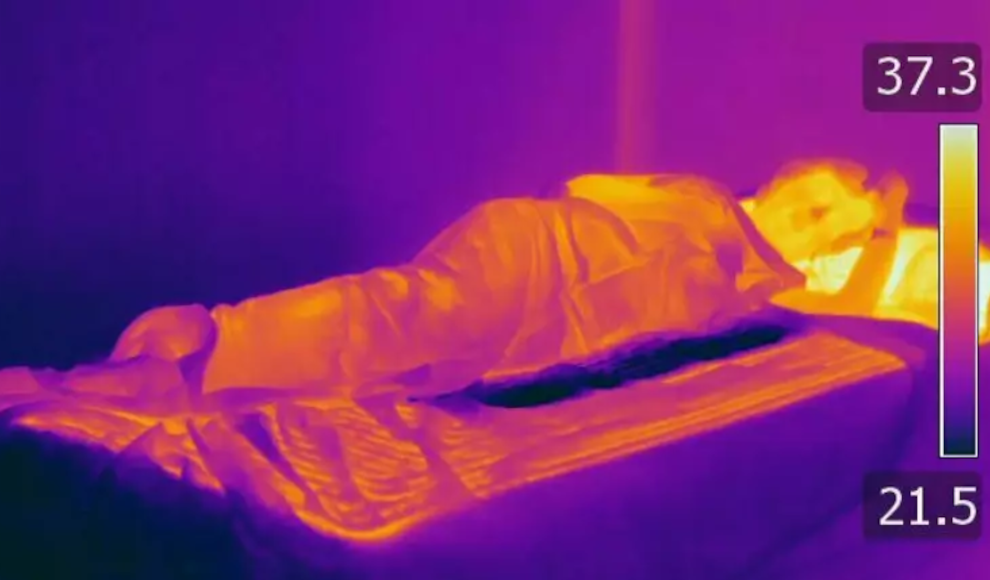A new mattress with an active heating and cooling system has been developed that significantly improves sleep quality and helps people fall asleep faster. According to a study by Fudan University, adults need seven hours of sleep per night for optimal cognitive performance and general well-being. Sleeping less than five hours per night increases the risk of chronic diseases, according to the University College London. Engineers at the University of Texas at Austin have developed a mattress with an active thermosystem that can improve sleep quality. The heating and cooling system supports the body’s natural circadian rhythm by cooling the spinal area and warming the edges of the mattress, as well as providing a heated pillow that stimulates the warmth sensors in the neck area.
The mattress was tested on eleven healthy male participants who went to bed two hours earlier than usual during the study period. The thermosystem of the mattress and pillow was sometimes activated and sometimes not. The researchers observed that the participants fell asleep 58% faster on average with the thermosystem activated. Brainwave measurements also showed that sleep quality was improved by the thermosystem. According to Kenneth Diller, the results show that the active thermosystem can improve sleep in healthy people. However, it is unlikely that a mattress with an active heating and cooling system will come to the mass market due to its high energy consumption and cost of production.
The active thermosystem of the mattress manipulates the body’s temperature sensors to adjust the body’s thermostat temporarily, making it easier to fall asleep. The gentle warming along the cervical spine also increases blood flow to the hands and feet, lowering the core body temperature and accelerating sleep. This effect also allows blood pressure to drop slightly overnight, allowing the cardiovascular system to recover from the stress of maintaining blood flow during daily activities, which is essential for long-term health. While the results of the study are promising, the high energy consumption and cost of production make it unlikely that a mattress with an active thermosystem will be available to the general public.










